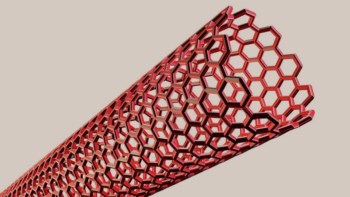
An electrical circuit inspired by the functionality of a neuron can operate in the quantum regime, according to recent models by a team of scientists from Spain and China. The researchers found that the distinct dynamics of information transport through a neuron are preserved when the signal is fully quantized. This merging of brain-function inspired networks and quantum informatics could lead to enhanced computing systems, as well as benefit growing research fields such as quantum machine learning.
The idea that information travels through neurons like electrical signals through a circuit is known as the Hodgkin-Huxley model. This was awarded the 1963 Nobel Prize in Medicine and created a strong link between physics and neuroscience. Since then many attempts to improve efficiency and speed in computation have taken inspiration from neurons, mimicking architectures found in the brain. Now, a new study revisits the fundamental Hodgkin-Huxley model to investigate its operation in the quantum regime.
A circuit’s memory
The scientists, led by University of the Basque Country’s Mikel Sanz, considered the dynamics of the potassium ion channel through a neuron cell. The variable concentration of ions passing through the cell membrane within the Hodgkin-Huxley model is normally simulated by introducing a nonlinear conductance. To represent that, the scientists made use of the concept of a memristor.
A memristor has “memory” of the electrical signals that have passed through it and has resistance that depends on that history. Back in 2016 Sanz was involved in the first model of a quantum memristor. Using this model was key for the researchers’ quantized circuit version of Hodgkin-Huxley.
The team considered an alternating current source for the system dynamics in both the classical and quantum regimes. In the latter case, they modelled parts of the circuit as semi-infinite transmission lines in order to fully quantize the electric signals. These transmission lines would have inductors joined in series and capacitors in parallel.
Quantum nature emerges
The scientists’ simulations confirmed that the Hodgkin-Huxley model can indeed operate in the quantum regime while preserving the main features of its dynamics. Curiously, the team found that even when the circuit was quantized, the signal response was classical in nature. However, they found that the expression for the second moment of the voltage – which gives the average power output – had a term of fully quantum origin. According to the researchers, that term relates to the circuit’s zero-point energy – the lowest amount of energy that a quantum system may have.

Multiple excitons make a surprise appearance in 2D hybrid perovskites
In practice it is superconducting circuits at ultra-low temperatures that allow access to the quantum regime of electric signals. In 2017 Sanz took part in research on a realistic quantum memristor that could be integrated in such circuits. With the rate at which such technologies develop, this continued research could lead to functional quantum neuron-inspired networks. This offers an alternative route towards the realization of a universal quantum computer.
You can read the full article in Physics Review Applied.



